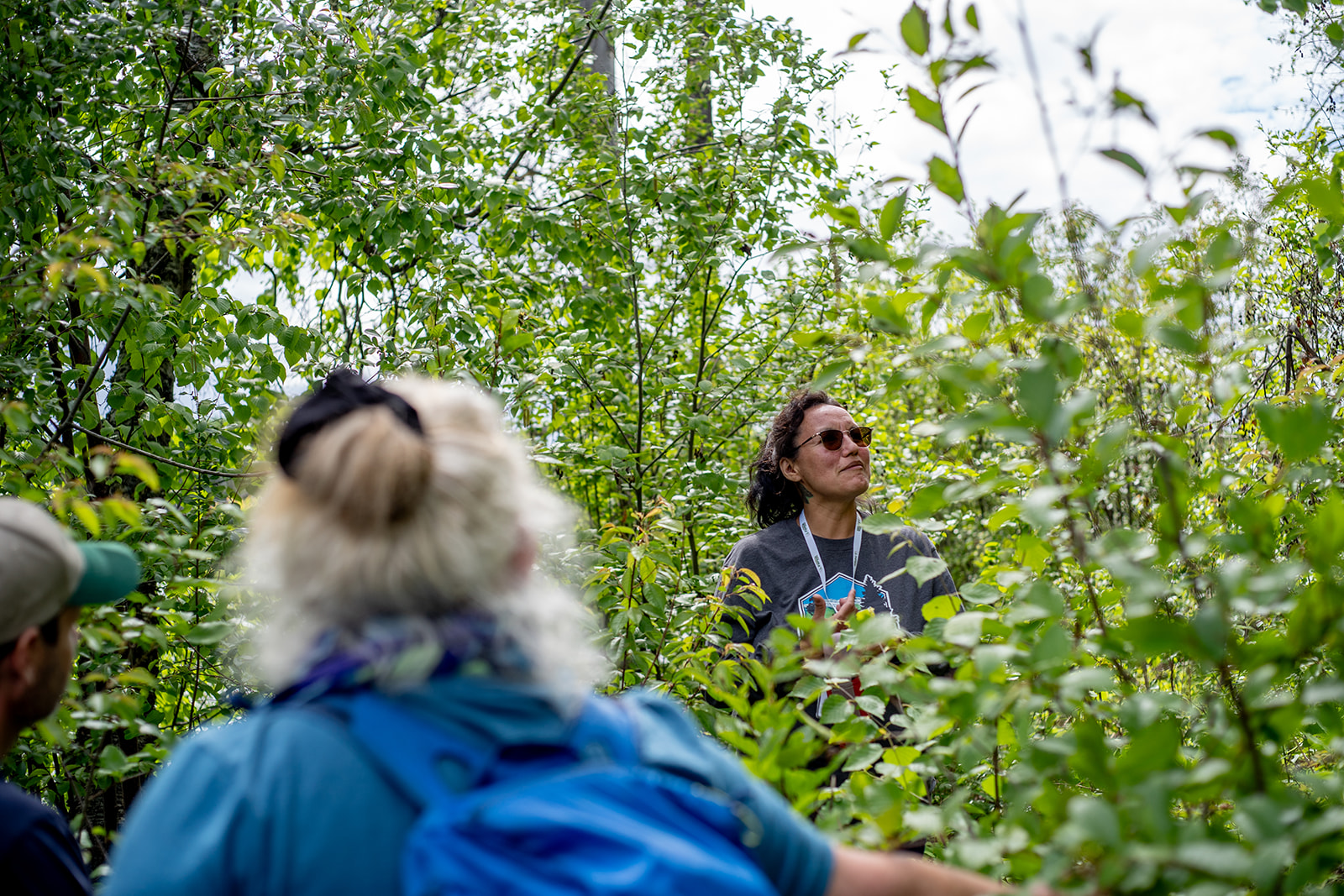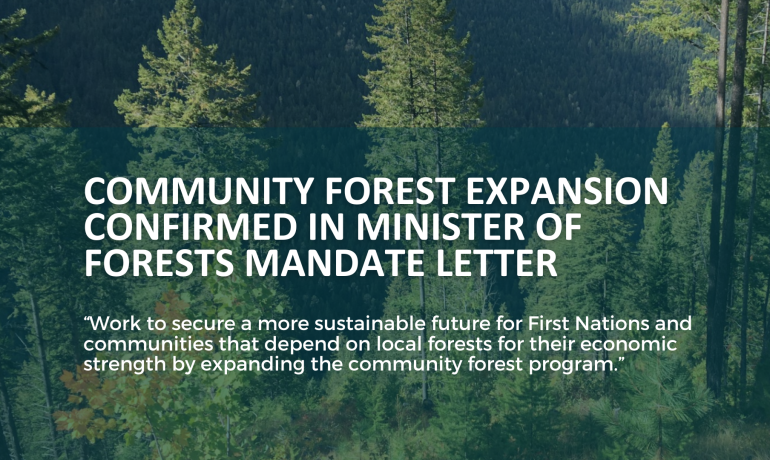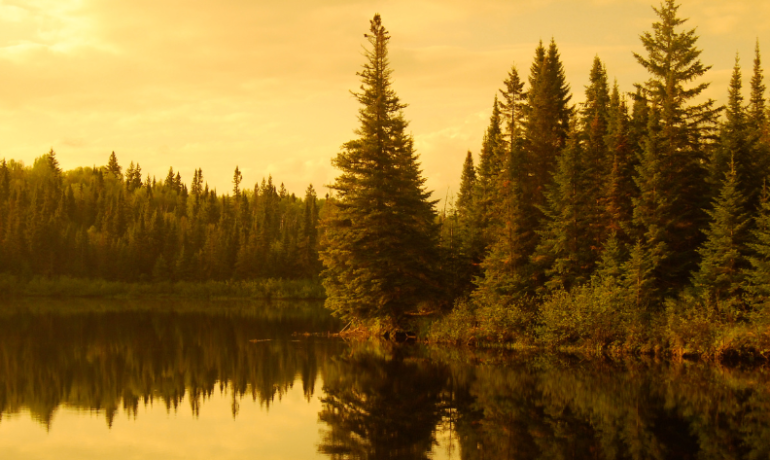Jennifer Gunter’s Op Ed, “Community Forests: Rooted in Community, Growing for Generations” has been published in Canadian Forest Industries Magazine, Pulp & Paper Magazine and Canadian Biomass Magazine. Read the full piece below:
Community Forests: Rooted in Community, Growing for Generations
By Jennifer Gunter, Executive Director, BC Community Forest Association
July 31, 2025
Did you know that community forests are one of B.C.’s most promising models for building sustainable, locally driven forest economies? The community forest tenure, called a community forest agreement, was created to put decision-making power in the hands of local people — to ensure that forests are managed not only for profit, but for public benefit: community employment, ecosystem health, wildfire mitigation, and long-term economic resilience, for generations to come.
There are currently 62 community forests in B.C., and the promise of more to come as the Provincial government has committed to expanding the Community Forest Program. They range in size from 361 to 184,682 hectares and are as diverse as the communities that manage them. The licences are long-term, and area based. Collaboration between Indigenous and non-Indigenous communities is central. Indeed, half of the existing community forests are held by First Nations or a partnership between Indigenous and non-Indigenous communities. Collectively, they represent about 5% of the provincial timber harvest.
Community forests are located on public land and are governed by the Forest Act and the Forest and Range Practices Act, and all other applicable statutes and regulations. They pay stumpage based on a tabular rate system that recognizes the Community Forest Program goals and the unique conditions under which they operate.
Since its inception, the Community Forest Program has fostered long-term, community-led forest management that reflects local values and priorities. Over time, it has delivered enduring social, economic, cultural, and environmental benefits. While community forests focus on creating a wide range of positive outcomes, their primary revenue comes from log sales. These logs are sold across the full spectrum of B.C.’s milling and manufacturing sector — from large industrial mills to micro mills and specialty operations. And they support a diverse local supply chain that includes forest professionals, loggers, truck drivers, tree planters, mechanics, and small businesses like tire shops.
Today, community forests operate in a context shaped by fibre scarcity, mill closures, wildfire risk and climate change, and an increasingly unstable economic environment — made even more difficult by the ongoing softwood lumber trade dispute with the United States. The pressure to balance local benefits and profitability is something community forests must continuously navigate.
A recent news article raised valid questions about the future of small, value-added mills in B.C. and their relationship with community forests. The BC Community Forest Association (BCCFA) welcomes this attention and agrees that where logs go — and who benefits — matters deeply. But we also believe it’s important to reflect the full picture.
As we engage in this conversation, here are a few facts and principles to help frame the discussion:
Community forests exist to serve the public good — not private profit.
Every community forest is unique, governed by boards accountable to local people and these boards must weigh many competing priorities. Some reinvest profits into activities to enhance wildlife habitat, mitigate wildfire risk to better protect communities, and develop recreation trails and educational opportunities. Others provide direct funding to their First Nations and local government shareholders, to local community groups or help support housing and emergency resilience. Most do a mix. There is no single model, and that’s the point — these licences reflect the local values of local communities.
Supporting local mills is a priority — and a challenge.
Many community forests work directly with small, value-added mills and businesses. These partnerships often yield the greatest social and economic value per cubic metre harvested. But the economics can be tough. Smaller mills may be challenged to pay market prices and community forests must balance their support for local processing with the need to remain financially viable.
Local boards face complex trade-offs.
Managing a community forest responsibly means covering the costs of reforestation, building roads, forest health, wildfire mitigation work, staff, and compliance costs — often with narrow margins. It’s not as simple as choosing local jobs or higher bids. It’s a balance to ensure long-term sustainability and keep benefits flowing to the whole community.
The path forward is one of collaboration.
The issues raised in the news about communities like Valemount highlight tensions that should be addressed — not with finger-pointing, but through open and constructive dialogue. This is where the most durable solutions are found. The BCCFA supports community forests by providing province-wide information and resources. This helps them engage residents and elected officials in proactive, informed conversations about forest management, both provincially and locally.
Provincial policy must match provincial priorities.
If value-added manufacturing, rural development, local jobs and sustainable forest management are priorities, we need supportive policy to make those outcomes feasible. The province’s tabular stumpage rate for community forests is integral — but more is needed, especially in the face of growing external pressures, including the U.S. trade dispute. The BCCFA believes that the Province’s Value-Added Accelerators are a step in the right direction.
In a news story about logs leaving Valemount — and other similar concerns across the province — the issue should not be framed as a ‘failure’ of the community forest model. Rather, these scenarios reflect the pressure these communities are under and emphasize the need for stronger collaboration between mill operators, tenure holders, and government partners. We are beginning to see examples of this in initiatives such as the Robson-North Thompson Forestry Coalition. Led by the Simpcw First Nation along with five community forests, value-added manufacturers, local government and industry representatives, the coalition is dedicated to promoting small and medium sized value-added and specialty forest products manufactures in the region.
The BCCFA is committed to collaboration. In our ongoing work, we advocate for policies that help community forests fulfill their potential and to help keep the economic and social value of B.C.’s forests in the communities closest to them.
We believe in the community forest model — not only for what it has done in the past, but for what it can become. With the right support and a shared vision, community forests will help lead the transformation toward a more sustainable, locally beneficial forest sector.
Community forests have never focused solely on managing forests for timber. Instead, they take a multifaceted approach to stewardship, managing forests for the benefit of people, place, and long-term resilience.
Related Post
Minister of Forests Mandated to Expand BC’s Community Forest Program
In the recently released mandate letter to the Minister
BCCFA Congratulates Newly Announced Three Rivers Community Forest in Quesnel, BC
The BC Community Forest Association (BCCFA) is proud to



